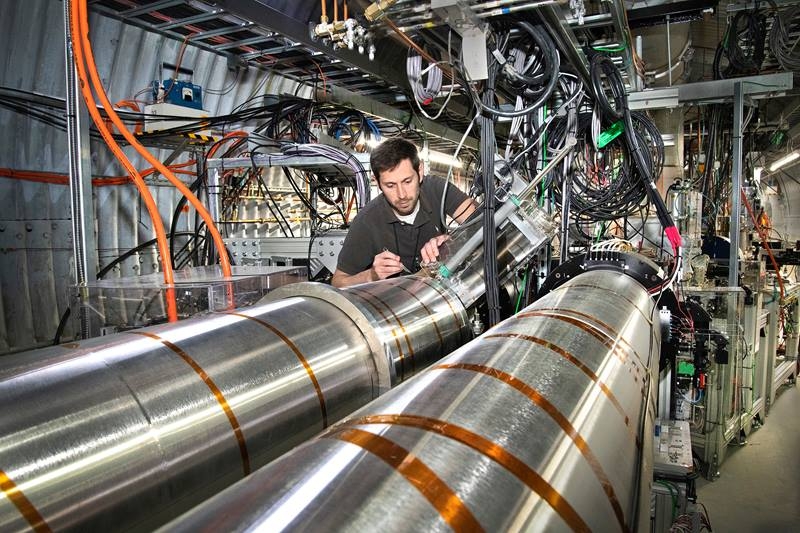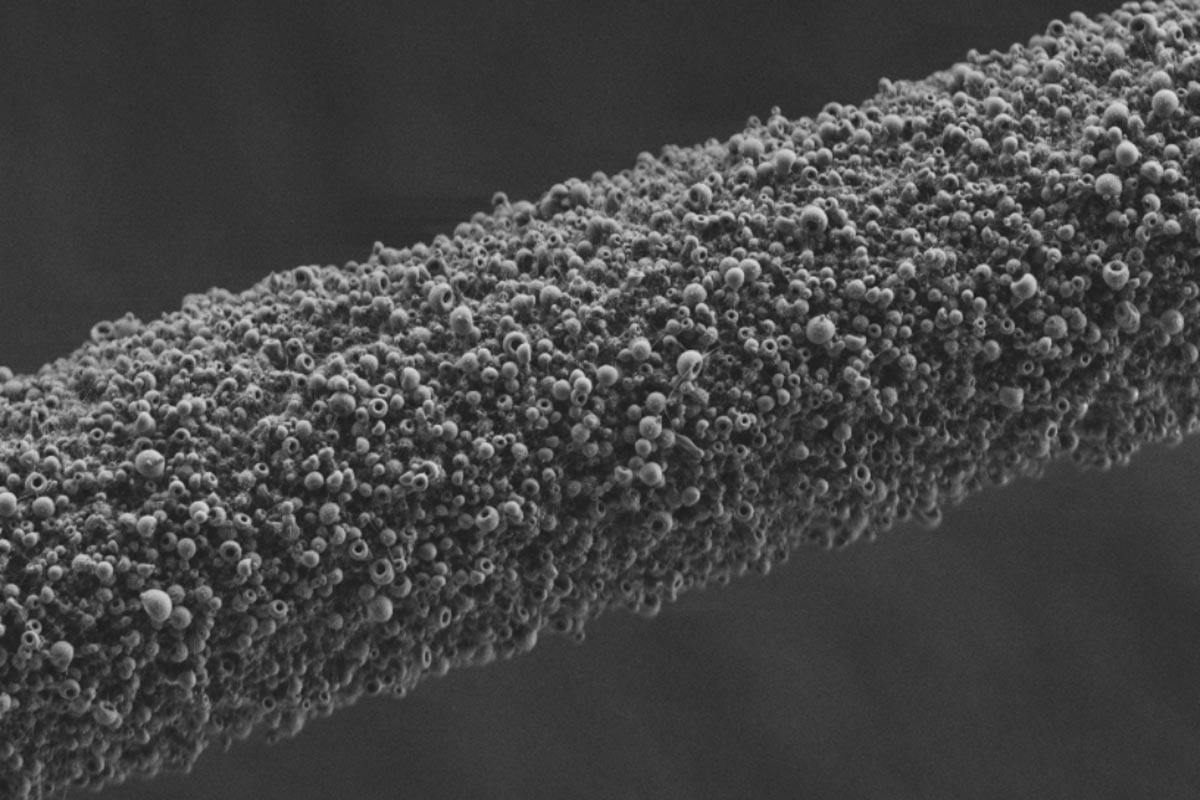Physicists at the Relativistic Heavy Ion Collider (RHIC) have demonstrated a groundbreaking technique that uses bunches of electrons to cool the beams of gold ions in RHIC. RHIC circulates two beams of gold ions (atoms with their outer cloud of electrons removed) at nearly the speed of light. As these beams travel around RHIC, they collide at points where the beams cross. The new “bunched-beam” electron cooling system keeps RHIC’s ion beams tightly packed together, especially at low energy levels. This bunching increases the chances that the ions will collide. These collisions free the subatomic particles that make up the ions, producing data on basic properties of matter.
The Impact
The Low Energy RHIC electron Cooling (LEReC) system will maximize collision rates at the lowest energies available at RHIC. Data are scarce at these energies but are essential to exploring the details of how nuclear matter exists in different phases. These phases are somewhat analogous to the liquid, gas and solid (ice) phases of water. These data help scientists explore how the building blocks of matter in the early universe changed into today’s ordinary matter. The LEReC project required a series of advances in laser, magnet, and other accelerator technologies. These advances for the most challenging low-energy collisions also open the door to applying the same principles at higher energies and at other research facilities.
Summary
The recently demonstrated LEReC system at RHIC, a DOE Office of Science user facility, uses a beam of electrons to extract heat from a beam of ions. This is similar to how the liquid running through your home refrigerator extracts heat to keep food cool. The lightweight electrons are inherently cooler than larger ions moving at the same speed, so mixing “cool” electrons with ions in RHIC can extract “heat” that would normally cause the ions to spread out. More tightly packed ions collide more frequently, producing more data.
To make this system a reality at RHIC, the team had to build and commission a new state-of-the-art electron accelerator that would fit inside the RHIC tunnel. This new accelerator required the use of compact radiofrequency (RF) acceleration technology in place of the standard direct-current method used in all previous electron-cooling accelerator setups. And because RHIC’s ions circulate as bunches, not a continuous stream, the electrons had to be produced in pulses that matched with those bunches in timing, energy, and trajectory—all while maintaining their intrinsic coolness. Because RHIC is really two accelerators, with ion beams moving in opposite directions in two beampipes, the physicists had to figure out how to cool both beams with the same stream of electrons. To generate and rapidly accelerate these precision electron bunches, the team used a beam of green light from a pulsed laser directed at high voltage onto a surface that easily emits electrons to produce what is known as a photocathode electron gun. The laser that triggers the photocathodes to emit pulses of electrons is the highest average power green laser ever generated by a single fiber-based laser. Precision alignment and trimming of the laser pulses controls the frequency of the electron bunches, while beam-monitoring instruments and precisely placed RF acceleration cavities enable careful adjustments that keep the ions’ energy spread as low as possible. Once these finely tuned electron bunches enter one of RHIC’s two accelerator beampipes, they propagate with the ions and extract their heat through a 100-meter section, then make a 180-degree turn into the twin accelerator to cool the ions moving in the opposite direction. The system is in use for the second year of a three-year program to conduct RHIC collisions over a range of energies that span the phases of nuclear matter.
Funding
LEReC was funded by the DOE Office of Science and benefitted from the help and expertise of many in Brookhaven Lab’s Collider-Accelerator Department and Instrumentation Division, as well as contributions from Fermi National Accelerator Laboratory, Argonne National Laboratory, Thomas Jefferson National Accelerator Facility, and Cornell University.
Original post https://alertarticles.info



